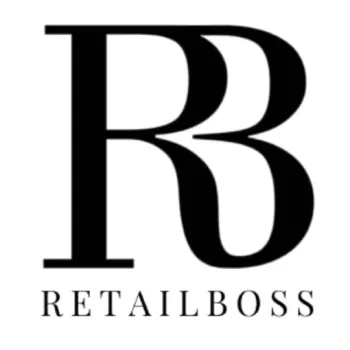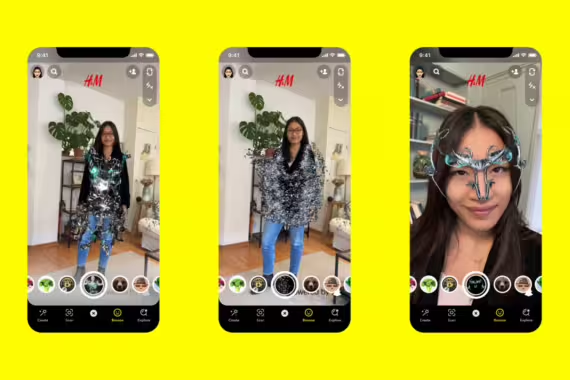In a transformative leap for the retail industry, augmented reality (AR) and virtual reality (VR) technologies are becoming indispensable. According to The SNS Insider Report, the Augmented Shopping Market was valued at USD 4.0 billion in 2023 and is projected to skyrocket to USD 57.5 billion by 2032, growing at an impressive CAGR of 34.30% during the forecast period of 2024-2032. Once seen as futuristic concepts, AR and VR are now paramount to enhancing customer satisfaction and significantly reducing return rates, addressing a major issue for online retailers.
- 1. IKEA Place (AR Furniture Visualization)
- 2. L’Oreal Virtual Try-On (AR Makeup Try-On)
- 3. Sephora Virtual Artist (AR Makeup Try-On)
- 4. Nike Fit (AR Shoe Sizing)
- 5. Amazon AR View (AR Product Visualization)
- 6. Walmart AR Shopping (AR Furniture Visualization)
- 7. Warby Parker Virtual Try-On (AR Glasses Try-On)
- 8. ModiFace AR Beauty Try-On
- 9. Zara AR Experience (AR In-Store Models)
- 10. Alibaba AR Shopping (AR Product Visualization)
- 11. ASOS – ASOS Virtual Catwalk
- 12. H&M AR Shopping Experience (AR Clothing Visualization)
- 13. Hershey’s AR Experience (AR Interactive Campaigns)
Retailers increasingly harness AR and VR to distinguish themselves in the competitive market, attract a tech-savvy clientele, and foster enduring brand loyalty. These technologies are elevating customer experiences, whether it’s by allowing users to try on clothes and makeup virtually or visualize furniture in their homes. Let’s explore 13 best examples of augmented reality in retail, showcasing how leading brands harness AR to create innovative, customer-centric shopping experiences.
| Brand | AR Technology | Launched |
|---|---|---|
| IKEA | IKEA Place | 2017 |
| L’Oreal | L’Oreal Virtual Try-On | 2018 |
| Sephora | Sephora Virtual Artist | 2016 |
| Nike | Nike Fit | 2019 |
| Amazon | Amazon AR View | 2017 |
| Walmart | Walmart AR Shopping | 2018 |
| Warby Parker | Warby Parker Virtual Try-On | 2020 |
| ModiFace | ModiFace AR Beauty Try-On | 2015 |
| Zara | Zara AR Experience | 2018 |
| Alibaba | Alibaba AR Shopping | 2017 |
| ASOS | ASOS Virtual Catwalk | 2020 |
| H&M | H&M AR Shopping Experience | 2019 |
| Hershey’s | Hershey’s AR Experience | 2017 |
1. IKEA Place (AR Furniture Visualization)
Launched in September 2017, IKEA Place allows customers to visualize furniture in their homes using AR. The app has been downloaded millions of times, significantly reducing return rates.
Why We Love It: IKEA Place solves the biggest pain point in furniture shopping—visualization of how furniture will look in your space.
2. L’Oreal Virtual Try-On (AR Makeup Try-On)
Launched in 2018, L’Oreal’s AR try-on tools, powered by ModiFace, have been used over 20 million times, driving a 2-3x increase in conversion rates.
Why We Love It: Helps with experimenting with makeup looks in real-time without the pressure of buying—it’s fun, personalized, and boosts buyer confidence.
3. Sephora Virtual Artist (AR Makeup Try-On)
Launched in 2016, Sephora’s Virtual Artist has seen over 200 million shade try-ons, helping customers experiment with makeup virtually.
Why We Love It: Sephora empowers customers to try bold new looks and discover products tailored to their preferences, all from the comfort of their homes.
4. Nike Fit (AR Shoe Sizing)
Introduced in 2019, Nike Fit uses AR to scan users’ feet and recommend the perfect shoe size, reducing returns by up to 30%.
Why We Love It: Nike is tackling shoe sizing issues head-on, which is a huge barrier to customers when buying from different brands when shopping online.
5. Amazon AR View (AR Product Visualization)
Launched in 2017, Amazon AR View allows customers to visualize products in their homes.
Why We Love It: I can see how a product fits into my space, eliminating guesswork and making me feel more confident in my purchase.
6. Walmart AR Shopping (AR Furniture Visualization)
Introduced in 2018, Walmart’s AR feature helps customers visualize furniture and home decor.
Why We Love It: Shoppers can see how furniture will look in my home before committing to a purchase—it’s practical and personalized.
7. Warby Parker Virtual Try-On (AR Glasses Try-On)
Launched in 2020, Warby Parker’s Virtual Try-On tool allows users to try on glasses virtually.
Why We Love It: I can try on dozens of frames in minutes, and it feels like having a personalized stylist at my fingertips.
8. ModiFace AR Beauty Try-On
ModiFace has been providing AR try-on solutions since 2015, with millions of users engaging with their technology monthly.
Why We Love It: Customers have the ability to test products virtually, which makes shopping feel more personalized and fun.
9. Zara AR Experience (AR In-Store Models)
Launched in 2018, Zara’s AR experience brought models to life in stores, driving a 30% increase in app downloads.
Why We Love It: I love how Zara blends technology with fashion to create an immersive shopping experience with fun AR tools.
10. Alibaba AR Shopping (AR Product Visualization)
Introduced in 2017, Alibaba’s AR shopping tools have been used by millions of customers, with a reported 30% increase in conversion rates.
Why We Love It: Alibaba makes online shopping more interactive —Customers can feel more connected to the items I’m buying.
11. ASOS – ASOS Virtual Catwalk
Launched in 2020, ASOS’s Virtual Catwalk allows users to see how clothes look on different body types, reducing return rates by 14%.
Why We Love It: I love how ASOS promotes diverse models, body positivity and inclusivity with this tool —it’s personalized and trendy.
12. H&M AR Shopping Experience (AR Clothing Visualization)
Introduced in 2019, H&M’s AR feature lets users visualize clothing in their environment.
Why We Love It: I enjoy seeing how outfits look in real life, H&M is making efforts to make the online shopping experience more personalized and fun.
13. Hershey’s AR Experience (AR Interactive Campaigns)
Launched in 2017, Hershey’s AR campaigns, such as interactive games and animations, have driven significant engagement.
Why We Love It: Customers can enjoy interacting with the brand in a fun and personalized way, which makes them feel more connected to their yummy treats.






























